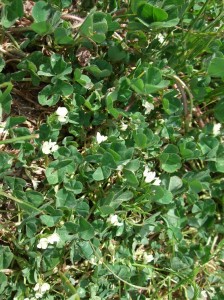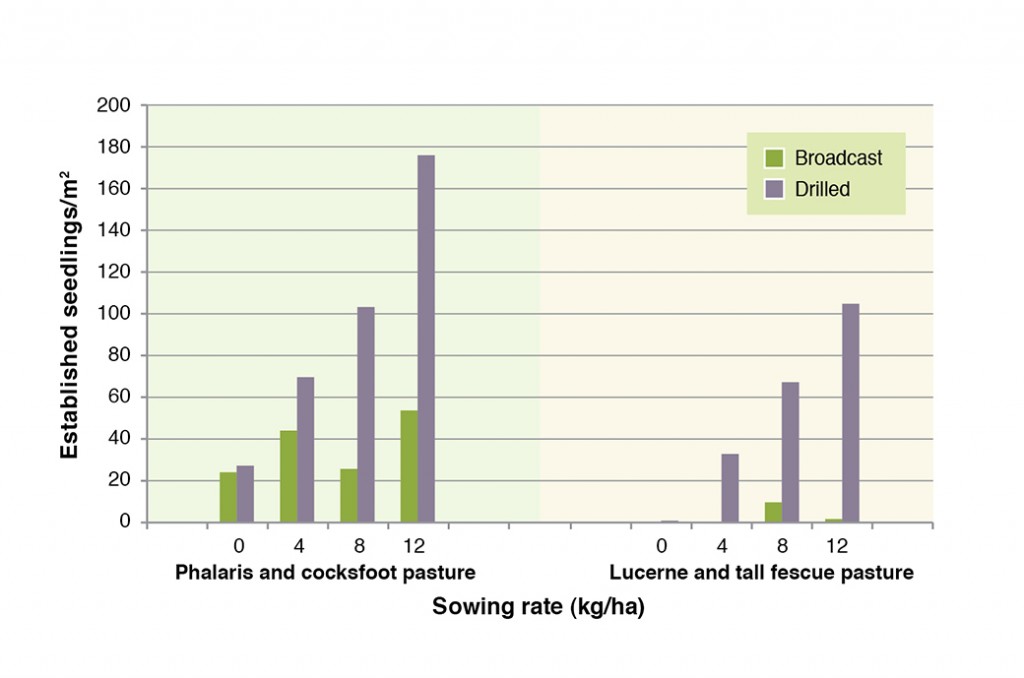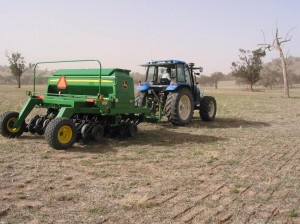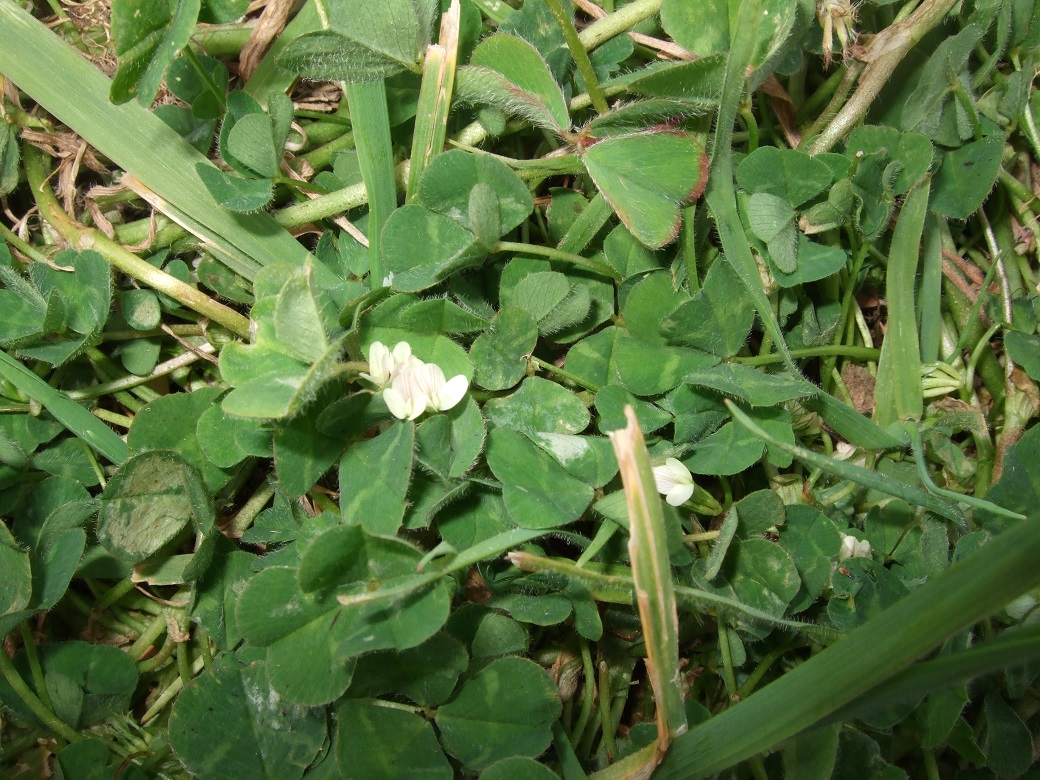Keep sub clover in the system – North East Victoria, Southern Slopes NSW and South West Victoria (Upper)
Over time, the Subterranean clover (sub clover) content of a pasture will tend to decline. This results in reduced animal production, a reduction in grass growth due to less nitrogen input and build-up of annual broad-leaf weeds.
Sub clover can decline for a number of reasons. Modern cultivars are resistant to many of the common diseases but if the pasture has older cultivars these diseases will take their toll. Early finishing seasons (i.e. failed springs) and false autumn breaks will deplete the sub clover seed bank. Other causes of decline include competition from grass species for moisture, nutrients and light (particularly in spring and autumn) which prevents good seed set and establishment.

If the sub clover content of your pasture is unsatisfactory, you will need to decide on a course of action. Questions to consider include:
- Does the pasture have a strong perennial grass foundation (> 30% of a desirable species as assessed in spring)? If so. then just re-sowing the sub clover is an option.
- Has the perennial grass component declined as well? If so, then it’s time for a complete pasture renovation with modern grass and clover cultivars suited to your environment (See EverGraze Exchange – Selecting Pastures for Place and Purpose and DEPI Agnote Establishing Perennial Pastures).
- Is there a strong sub clover seed bank (soil coring and sieving in summer will reveal the seed – about 200-300 kg of seed per hectare is minimal)? If so, then grazing management to favor clover is a good option.
NSW DPI provides an excellent guide to selecting, establishing and managing sub clover. The EverGraze Exchange – legumes for temperate pastures also provides information on selecting annual and perennial clovers. Below is a summary of some of the important points and recent research relating to re-establishing sub clover.
Selecting sub clover varieties
If re-establishing sub clover or establishing it for the first time, it’s important to select the right variety. Growing season length is the first criteria. A longer growing season variety will provide more feed and pasture for longer, but may not get to flower and seed if the season ends early, which is where shorter growing season clovers have an advantage. Including two clovers with different growing season lengths in a mix can help to provide quality but guard against a failed spring. Shorter season varieties usually also have a higher degree of hard seed and so guard against a false autumn break.
| Higher rainfall (>800 mm) and reliable spring lasting into November |
|
| At 600-800 mm, medium growing season varieties | |
| At 500-600 mm, |
Riverina or Trikkala can be used in waterlogged areas. Short growing season varieties (eg. Urana or Dalkeith) might be used in the mix to guard against a failed spring. |
In addition to growing season, other considerations include waterlogging and disease tolerance. In areas prone to waterlogging, yellow-seeded sub clovers (Gosse, Riverina or Napier) should be included in the mix. These varieties are also tolerant of Phytophthora.
Reintroducing sub clover
Broadcasting sub clover seed with fertiliser and direct drilling are two common methods of re-establishing sub clover into an existing pasture. Broadcasting is often recommended as the cheaper option, however research at the Holbrook EverGraze Proof Site suggests that broadcasting is not a reliable method.
At the site, seed was either broadcast or direct drilled into a phalaris/cocksfoot or a lucerne/tall fescue pasture in April 2009. Subterranean clover seedlings were counted three weeks later and these results are presented in Figure 1.
Direct drilling was more successful than broadcasting seed. In fact, broadcasting seed, even up to 12 kg/ha, was not much of an improvement over doing nothing. In fact, most of the seedlings identified in the broadcast treatment were not of the varieties sown. Similarly poor results were found at the Chiltern EverGraze Proof Site when seed was broadcast with superphosphate fertiliser on native pastures.
|
|
|
|
Keeping sub clover in the system
Once clover seedlings have established, the following recommendations will help to ensure their survival and to maximise seed set:
- Medium to heavy grazing (down to 1000-1500kg DM/ha) through late winter into spring until flowering to prevent shading from grasses and encourage branching and a good seed set;
- Graze hard in autumn to remove dry pasture and ensure good weed control to reduce competition and shading of establishing seedlings;
- Ensure fertility is adequate (take a soil test). Sub clover requires high levels of phosphorous and potassium. It also needs molybdenum, which needs to be applied every five to seven years in most soils;
- Hay making in the establishment year will significantly reduce sub clover seed set and future regeneration;
- Pay attention to pests such as red-legged earth mite. These can kill newly emerged clover seedlings, reduce photosynthetic potential and subsequent seed set.
|
|
Key messages
- Monitor the pasture and clover seed bank to determine if you need to adopt a re-seeding strategy or simply encourage the sub clover that is there to increase its seed set.
- Spending money on re-seeding is only an option if you’re looking at drilling rather than broadcasting.
- Sub clover is a legume so seed needs to be inoculated with an appropriate rhizobium when sown.
Authors and contributors
Anita Morant, Department of Environment and Primary Industries, Hamilton, Victoria
Steve Clark, Department of Environment and Primary Industries, Hamilton, Victoria
Kate Sargeant, Department of Environment and Primary Industries, Benalla, Victoria
Further Information
- Legumes for temperate pastures
- DPI NSW Agnote – Subterranean clover
- DPI NSW Subterranean Clover guide – Identification and use
- DPI NSW Subterranean Clover guide – Diseases of sub clover
- DPI NSW Subterranean Clover guide – viruses in sub clover
- DPI NSW Subterranean Clover guide – Sub clover varieties and their identification
- DPI NSW Subterranean Clover guide – Choosing the right sub clover variety
- DPI NSW Subterranean Clover guide – Establishing sub clover




